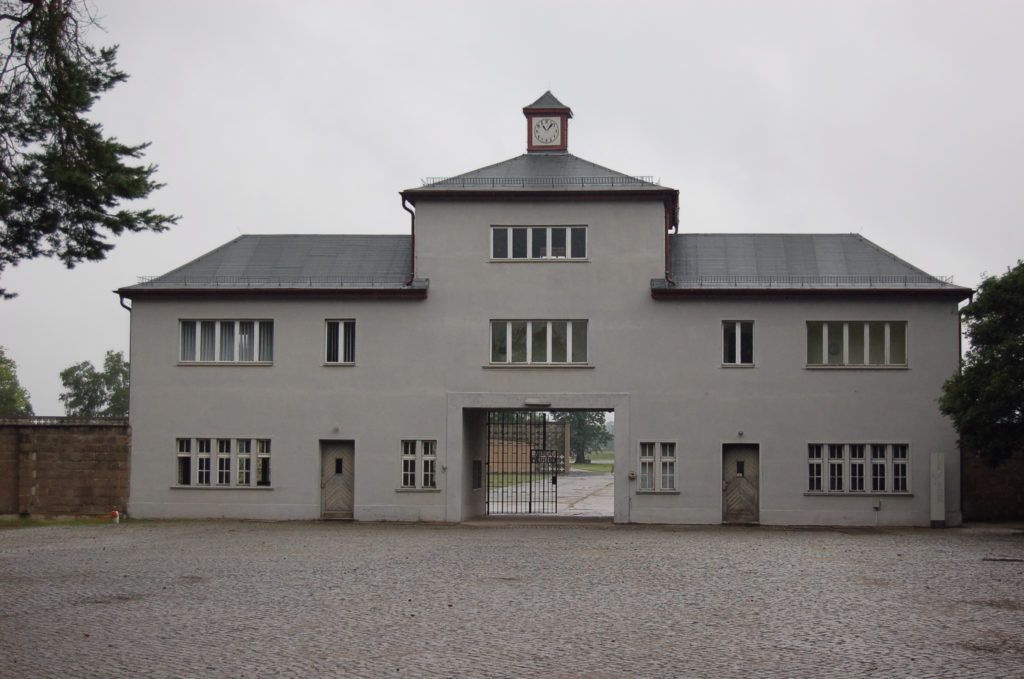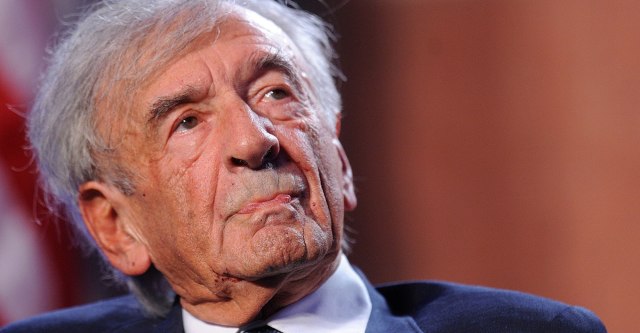Nobel laureate and Holocaust survivor Elie Wiesel . Credit: Olivier Douliery/ABACA/Press Association Images

Douglas Murray’s UnHerd documentary on the forgotten victims of communism makes the important point that too many still fail to acknowledge that there were two twentieth century evils: fascism and communism. As Anne Applebaum demonstrates in her searing and brilliant Red Famine: Stalin’s War on Ukraine, the Holodomor (the Ukrainian word for “death by hunger”) was a crime comparable with anything committed by the Nazis. Four million Ukrainians died as a result of Stalin’s casual contempt for their lives. We lose sight of the victims of communism at our moral peril.
But for all the horrors of the twentieth century – and those more recently – the Holocaust stands as the most thoroughgoing and explicit demonstration of humanity’s capacity for evil. As Churchill wrote: “The Final Solution is probably the greatest, most horrible crime ever committed in the whole history of the world.”
This is not about some sick contest of suffering in which the Jews are declared the winner. It is, rather, that we can only truly understand the lessons of the Holocaust if we acknowledge what made it unique.
A useful starting point is with the Jewish philosopher Emil Fackenheim, himself a survivor who escaped to Britain after a year at Sachsenhausen concentration camp. (His elder brother, who would not leave Germany, was murdered by the Nazis.) For Fackenheim, four characteristics of the Holocaust separated it from other examples of mass murder.

First, the mere fact of being born Jewish was itself enough to merit extermination. (And the definition was – in modern parlance – as inclusive as possible, to ensure that no trace of Judaism would be left on earth.) Many Poles and Russians were also murdered by the Nazis, but their death was not pre-determined by Nazi ideology as a fundamental requirement – although Gypsies were also murdered for the crime of existing.
So secondly, the sole purpose of the Final Solution was to wipe out every Jew from the face of the earth. An entire people would be extinguished. Other genocides have targeted groups or races for mass murder; but they were not designed to remove them in their entirety. The Turkish genocide of Armenians or the Hutu genocide of the Tutsi in Rwanda, for example, were both unspeakable crimes. But they did not have all of Fackenheim’s four characteristics of the Holocaust.
Thus Fackenheim’s third unique characteristic was that there was no economic, political or territorial goal which the Final Solution was designed to leverage. The Final Solution was its own purpose. It was not part of the larger territorial war but it was nonetheless considered to a fundamental part of the Third Reich’s war effort. The two were equal in importance and so there was no significant internal dissent from the idea that resources that could have been used in war were instead used to exterminate the Jews.
It is this third characteristic that is perhaps the most rationally inexplicable of all elements of the Holocaust – that it had no purpose other than the murder of an entire people for the sake of their murder.
Fourthly, as Daniel Goldhagen further elaborated in his seminal 1996 book, Hitler’s Willing Executioners, the Holocaust was carried out not by a cadre of committed ideologues or committed soldiers but by ordinary Germans – what Fackenheim described as “ordinary job holders with an extraordinary job.”
Goldhagen argued that the overwhelming majority of Germans were “willing executioners” because of the “eliminationist antisemitism” which had taken hold in German political culture over many centuries. Crucially, he destroyed the comfortable myths that most Germans knew nothing of the Holocaust – and that it was only the SS and not the Wehmarcht who murdered Jews. As the Holocaust scholar Franklin Littell wrote: “The death camps were designed by professors and built by Ph.D.s.” Civilised Germans – doctors, architects and writers – tortured and murdered Jews while Bach and Wagner played in the background, testing to see what levels of pain could be survived or, as Auschwitz’s chief physician, Dr Joseph Mengele, enjoyed himself, sewing twin children together to create a “Siamese pair” to test their behaviour.
Why does it matter if the Holocaust was unique? For Nobel laureate Elie Wiesel, also a survivor, the memory and the potency of the Holocaust have to be permanently renewed because “to forget would mean to kill the victims a second time. We could not prevent their first death; we must not allow them to be killed again.”
But there is something more obvious, too. As George Santanya put it: “Those who cannot remember the past are condemned to repeat it.” Repeat the Holocaust? That is unthinkable. But repeat elements of it? It happened once. That alone ought to be enough to worry us.










Join the discussion
Join like minded readers that support our journalism by becoming a paid subscriber
To join the discussion in the comments, become a paid subscriber.
Join like minded readers that support our journalism, read unlimited articles and enjoy other subscriber-only benefits.
Subscribe